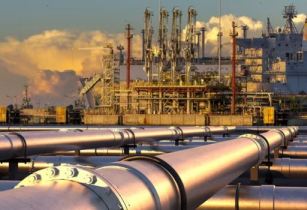In the presence of the Algerian President Abdelmadjid Tebboune and the Italian Prime Minister Mario Draghi, the President of Sonatrach, Toufik Hakkar, and the CEO of Eni, Claudio Descalzi have signed an agreement that will allow Eni to increase the quantities of gas imported through the TransMed / Enrico Mattei pipeline in Algiers
Gas
Sub-Saharan Africa gas output set to double by 2030: Rystad Energy
Untapped natural gas supplies in sub-Saharan Africa are set to be unleashed this decade, with output more than doubling from 1.3 million barrels of oil equivalent per day (boepd) in 2021 to 2.7 million boepd in 2030 due to vast undeveloped deepwater resources, according to Rystad Energy research
McDermott wins mega EPCI projects from QatarEnergy
McDermott International has won a mega offshore contract from QatarEnergy, that aims to deliver engineering, procurement, construction and installation (EPCI) for the North Field East (NFE) Topsides and the North Field East (NFE) Offshore Pipelines and Subsea Cables projects, with an option included to also award the North Field South (NFS) Offshore Topsides
Shell signs gas concession agreement in Oman’s Saih Rawl field
Shell Integrated Gas Oman and its partners OQ and Marsa Liquefied Natural Gas LLC have signed a concession agreement with the Ministry of Energy and Minerals on behalf of the government of Oman to develop and produce natural gas from Block 10 of the Saih Rawl gas field
EGA signs MoU with GE to decarbonise gas turbine fleet
Emirates Global Aluminium, one of the largest industrial companies in the UAE, and GE Gas Power have announced to develop a roadmap to reduce greenhouse gas emissions from the operation of EGA’s existing GE natural gas turbines by exploring hydrogen as a fuel, as well as carbon capture, utilisation and storage solutions









